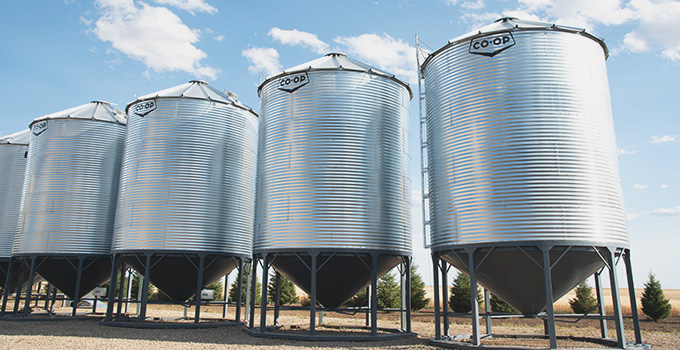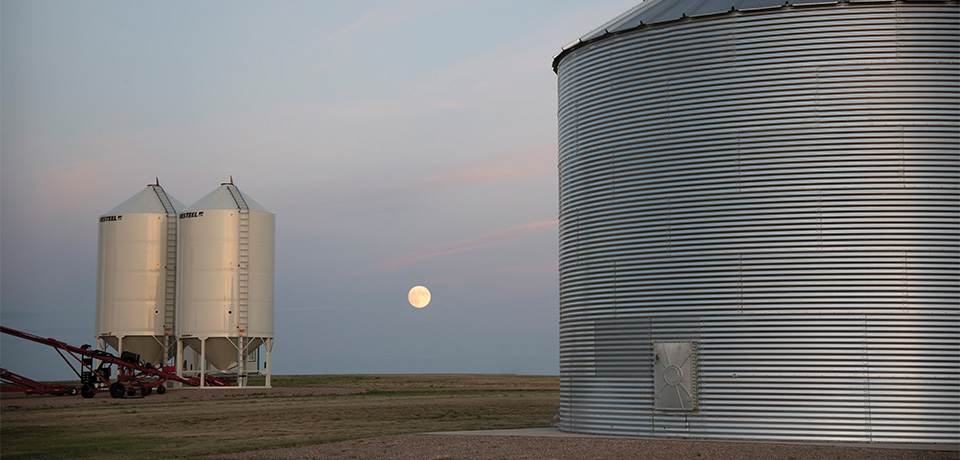In a market that is heavily driven by weather, having an efficient and proactive grain storage strategy is essential. Whether you’re purchasing a new bin for the first time or you’re seeking new bin size options, there are several factors to consider before making such an investment — especially if you’re looking at large bin sizes. To put this matter into perspective — large storage bins are housing your livelihood, and therefore require careful consideration. Here are some important factors that should affect your decision-making.

Bin Capacity
Bin capacity is likely to be your first consideration. Once you’ve determined the number of bushels you want in a new bin, consider adding more. Having the extra storage will cover your storage needs when you experience bumper crops, change the structure of your crop rotation, or take on extra acres. Some farmers may not wish to mix different varieties of the same crop — especially if they switch fields and are concerned with the overall grade of the finished product. Choosing the right capacity bin will be determined by what each individual farmer is comfortable with. In most cases, getting a large diameter bin (more than 30 feet in diameter) at less cost per bushel will save the producer the extra cost of the hopper cone.
Pros and Cons of Large Diameter Bins
Pros:
- Filling capacity makes it more efficient for moving augers around from bin to bin
- Better air coverage with full-floor aeration
- Less cost per bushel than a smaller diameter bin on a hopper bottom
Cons:
- Maintenance and power requirements may be greater
• Resale value not as high as hopper bottom bins - If an upgraded auger is required, you may need a higher-horse-power tractor to operate it
Determining Bin Size Based on Price Per Bushel
When choosing a grain bin, farmers should calculate the cost per bushel of the bin they are considering. Cost per bushel is normally determined by the size of the bins — as bins get wider and taller, the cost per bushel decreases.
The maximum diameter of the bin you choose will depend on the layout of your yard and the space needed for auger loading. Where space is an issue, you may consider adding height. However, overly tall bins will reduce the conditioning capabilities with aeration, requiring more conditioning/aeration and creating a potential risk for airflow reduction due to lack of fan power.
Yard Layout
Simply choosing to put a new large diameter bin into the farmyard isn’t going to cut it. It’s important to factor in the flow of traffic in your yard space, as well as your long-term development plans. This includes the addition of other stationary or mobile grain handling equipment, such as grain dryers, fans and aeration units. You will also need a long enough auger to reach the large bin, and remain compatible with your yard space and layout.
Expert Advice Is Available
Whether you’re looking to replace existing bins or increase your storage capacity, the team at your local Co-op Agro Centre is always ready to help you explore your options.
“When I speak to producers about purchasing a bin, I usually ask them how much storage they want to add, then I add 20% to that total,” said Barry Angyal, Equip Team member with Twin Valley Co-op. “Future growth and site planning are also major factors. What you think will be good today will more than likely not be sufficient down the road. Even if you don’t fill all your bins right to the top this year or next year, you have extra storage for when you come across more land.”
Angyal also suggests that farmers keep their succession plans in mind. “If farmers plan to transition operations to their children or other family members, then bigger bins just make sense,” he said. “However, if they plan on retiring in the next few years and selling the farm is on the horizon, then hopper bottom bins up to 18’ in diameter are the best option for resale. We can transport them down the road fully assembled and they often sell for top dollar at auction sales.”
After Your Purchase
As with most on-farm assets, maintenance of your grain bins will extend their longevity. Consider potential storage problems, such as fans that have iced over in poor weather or condensation building on the roof of your bin if not aerated properly.
In addition, long-term storage may invite unwanted insects and, thus, sterilization is important. Checking the temperature, ensuring proper aeration and sterilization is essential regardless of your bin size.
To learn more about available grain bins, contact your local Equip Team member.

